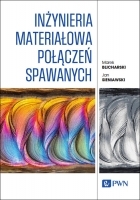Wpływ przyspieszenia kątowego ściernic do przecinania na ich wytrzymałość na rozerwanie
The influence of angular acceleration on breaking strength of cut-off wheels
Mechanik nr 08/09/2015 - Wersje autorskie artykułów z XXXVIII Naukowej Szkoły Obróbki Ściernej zamieszczone na płycie CD
STRESZCZENIE: W artykule opisano zagadnienie wpływu przyspieszenia kątowego na wynik badania wytrzymałości na rozerwanie żywicznych ściernic do przecinania. Zaprezentowano przegląd literatury wskazujący, że polimerowe kompozyty wzmacniane włóknami wykazują wzrost wytrzymałości przy wyższych prędkościach odkształceń. Przedstawiono sposób realizacji i wyniki badań wytrzymałości ściernic, w których uwzględniono zmianę szybkości wzrostu obciążania siłą odśrodkową. Sformułowano wnioski dotyczące wpływu przyspieszenia kątowego ściernic na ich wytrzymałość.
SŁOWA KLUCZOWE: ściernice do przecinania, prędkość odkształceń, wytrzymałość na rozerwanie
ABSTRACT: The article describes the influence of the angular acceleration on the test result of the breaking strength of the resin cut-off wheel. It presents a review of the literature indicates that fiber-reinforced polymer composites show an increase in strength with increasing strain rate. The way of conducting the study on the grinding wheel strength and its results are presented. The studies included changing the growth rate of the load by the centrifugal force. The conclusions concerning the impact of the angular acceleration on the strength of cut-off wheels are presented.
KEYWORDS: cut-off wheels, strain rate, bursting speed, strength
BIBLIOGRAFIA / BIBLIOGRAPHY:
- EN-12413: Wymagania bezpieczeństwa dotyczące narzędzi ściernych spojonych
- www.hhw.de
- Ochelski S., Metody doświadczalne mechaniki kompozytów konstrukcyjnych, WNT, Warszawa 2004.
- Gruin M., Materiały polimerowe, PWN, Warszawa 2003.
- Barre S., Chotard T., Benzeggagh M. L., Comparative study of strain rate effects on mechanical properties of glass fibrereinforced thermoset matrix composites. Composites Part A vol. 27A 1169-1181, 1996.
- Berezhnyts’kyi L.T., Panasyuk V.E., Effect of the strain rate and temperature on the physicomechanical properties of glass-fiber-reinforced plastics. Materials Science, Vol. 37, No. 1, 53-58, 2001.
- Gilat A., Goldberg R., Roberts G., Experimental study of strain-rate-dependent behavior of carbon/epoxy composite. Composites Science and Technology Vol. 62,1469–1476, 2002.
- Jacob G., Starbuck M., Fellers J., Simunovic S., Boeman R., Strain Rate Effects on the Mechanical Properties of Polymer Composite Materials. Journal of Applied Polymer Science, Vol. 94, 296–301, 2004.
- Heimbs S., Schmeer S., Middendorf P., Maier M., Strain rate effects in phenolic composites and phenolic-impregnated honeycomb structures. Composites Science and Technology vol.67, 2827–2837, 2007.
- Najafi M., Khalili S. M. R., Eslami-Farsani R., The Strain Rate Effect on Bending Properties of Basalt and Carbon Fibers Reinforced Phenolic Composites. Int. J. Advanced Design and Manufacturing Technology, Vol. 5/ No. 4/ September – 2012.
- Mall S., Law G.E., Katouzian M., Loading rate effect on interlaminar fracture toughness of a thermoplastic composite. Journal Composite Materials, Vol. 21,569-579, 1987.
- Kaczmarek J., System wielokryterialnej oceny I doskonalenia wytrzymałości ściernic do przecinania. Sprawozdanie z projektu badawczego nr 4 T07D 010 29, Łódź, 2008.
- Wilczyński A., Polimerowe kompozyty włókniste. Własności, struktura, projektowanie. WNT, Warszawa, 1996.
- Torabizadeh M., Tensile, compressive and shear properties of unidirectional Glass/epoxy composites subjected to mechanical loading and low temperature services. Indian Journal of Engineering & Materials Sciences, vol.20, 299-309, 2013.





















